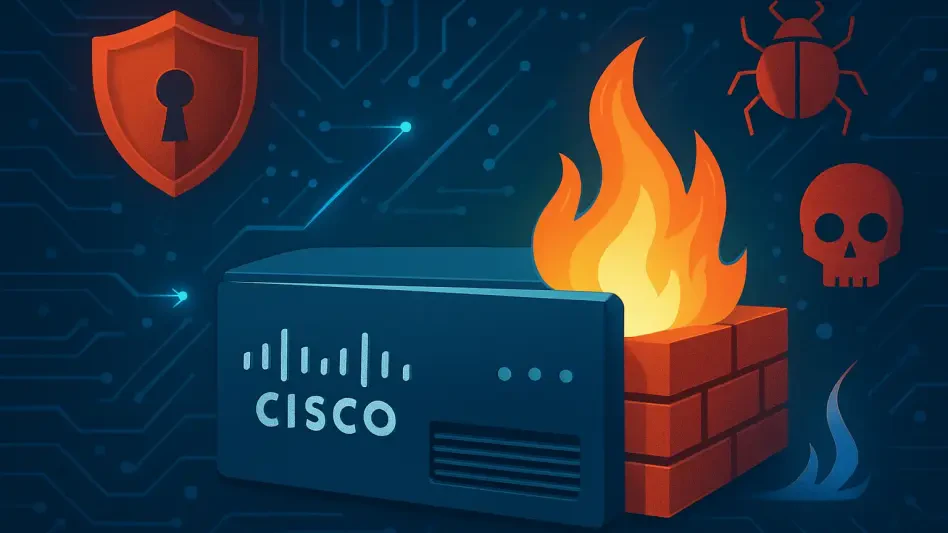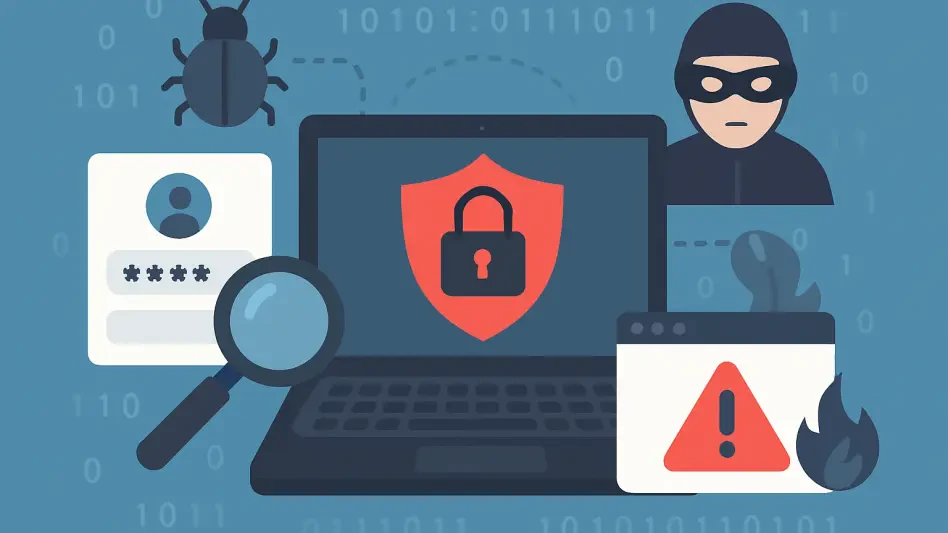In an era where digital infrastructure underpins global operations, a staggering statistic emerges: over 60% of critical network devices face persistent cyber threats, with Cisco firewalls at the forefront of this battle, and since early 2025, reports of sophisticated attacks on Cisco’s Adaptive Security Appliance (ASA) and Firepower Threat Defense (FTD) have raised alarms across industries and governments alike. Linked to a state-sponsored group known as UAT4356, these incidents signal a potential crisis for organizations relying on Cisco’s security solutions. This roundup dives into diverse perspectives from cybersecurity experts, industry analysts, and government advisories to unpack the severity of these threats, Cisco’s response, and actionable strategies for affected entities. The goal is to provide a comprehensive view of this evolving situation and guide stakeholders through an increasingly hostile digital landscape.
Exploring the Depth of the Crisis
The Relentless Assault on Cisco Firewalls
Insights from multiple cybersecurity firms highlight the alarming persistence of attacks targeting Cisco firewalls since the start of 2025. Analysts note that zero-day vulnerabilities, identified as CVE-2025-20333 and CVE-2025-20362, have been exploited to deploy malware and steal sensitive data. A particularly disruptive variant observed in November this year causes devices to reload continuously, triggering denial-of-service conditions that cripple operations.
Government advisories, including those from the US Cybersecurity and Infrastructure Security Agency (CISA), emphasize the sophistication of these attacks. The threat actor, UAT4356, employs advanced evasion tactics such as disabling logging to cover their tracks. This has sparked concern among experts about the challenges organizations face in detecting intrusions before significant damage occurs.
Contrasting opinions arise on the root cause of sustained exposure. While some industry voices argue that delayed patching leaves systems vulnerable, others point to the sheer complexity of managing large-scale networks. The consensus, however, is clear: without rapid response mechanisms, the risk of compromise remains unacceptably high for both private and public sector entities.
Cisco’s Defense Tactics and Partnerships
Feedback from industry watchers reveals a mixed assessment of Cisco’s countermeasures. The company’s release of patches in September 2025 has been praised as a critical step, alongside the formation of a dedicated team to support affected customers. This proactive stance demonstrates an intent to mitigate immediate risks and restore trust among users.
Collaboration with government bodies like CISA and the UK’s National Cyber Security Centre has also garnered positive attention. These partnerships have facilitated in-depth investigations into the attacks, particularly those impacting government agencies. Several analysts commend this public-private synergy as a model for addressing large-scale cyber threats, noting its role in disseminating timely threat intelligence.
Yet, skepticism persists among some cybersecurity professionals regarding the long-term effectiveness of these efforts. Reports indicate that unpatched systems continue to be exploited, suggesting that patches alone may not suffice against determined adversaries. This divergence in views underscores the need for organizations to complement Cisco’s solutions with robust internal security practices.
Broader Software Risks in Cisco’s Ecosystem
Beyond firewalls, attention has shifted to critical vulnerabilities in Cisco’s Unified Contact Center Express (UCCX) software, rated as high as 9.8 on the CVSS scale. Cybersecurity blogs and forums reveal a shared concern about flaws like CVE-2025-20354 and CVE-2025-20358, which could enable remote exploitation if left unaddressed. Fortunately, no active attacks have been reported as of now.
Differing perspectives emerge on how to prioritize these risks. Some experts advocate for immediate patching, warning that state-sponsored actors could pivot to these vulnerabilities once firewall exploits are thwarted. Others suggest a more measured approach, arguing that resources should focus on active threats rather than potential ones, given the absence of current exploitation.
A balanced viewpoint from industry panels stresses the importance of proactive defense. Even unexploited flaws represent a latent danger in an environment where attackers continuously adapt. This diversity of thought highlights a critical need for organizations to assess their specific exposure and act accordingly, rather than adopting a one-size-fits-all strategy.
State-Sponsored Cyber Warfare: A Wider Lens
Analyses from geopolitical and cybersecurity think tanks place these attacks within the broader context of advanced persistent threats (APTs) targeting critical infrastructure. The involvement of UAT4356, previously linked to the ArcaneDoor campaign, suggests a strategic intent to undermine key sectors, including government and telecommunications networks.
Government warnings contrast with Cisco’s cautious stance on attribution. While official statements hint at national security implications, Cisco avoids naming specific nation-states, focusing instead on technical mitigation. Some analysts argue that this reticence prevents a full understanding of the threat, while others believe it avoids unnecessary escalation in an already tense global arena.
Speculation among experts also touches on future implications. Many agree that these incidents could drive stronger international cybersecurity policies and collaboration over the next few years, from 2025 to 2027. This convergence of views points to an urgent need for frameworks that address state-sponsored threats without compromising diplomatic relations.
Key Takeaways from Diverse Perspectives
Synthesizing opinions across the board reveals several critical insights. The six-month-long assault on Cisco firewalls underscores the sophistication of state-sponsored actors, with UAT4356’s tactics posing a formidable challenge. Meanwhile, looming UCCX software flaws remind stakeholders that potential risks can be as dangerous as active ones if ignored.
Practical tips from industry forums include prioritizing immediate patching of known vulnerabilities and enhancing network monitoring for unusual activity. Government resources, such as CISA’s threat intelligence updates, are frequently cited as invaluable tools for staying ahead of evolving dangers. These recommendations aim to empower organizations to act decisively.
Another recurring suggestion is the importance of regular audits of Cisco device configurations. Training staff to spot early signs of compromise also features prominently in expert advice. Together, these actionable steps form a multi-layered defense strategy that complements Cisco’s ongoing efforts and addresses gaps in system security.
Reflecting on the Path Forward
Looking back, the discussions and insights gathered over recent months paint a sobering picture of the cybersecurity challenges facing Cisco users. The persistent attacks on firewalls and the shadow of unexploited software flaws underscore a pivotal moment for digital defense strategies. Diverse opinions from experts and agencies alike highlight both the urgency and complexity of the situation.
Moving forward, organizations are encouraged to adopt a proactive mindset by integrating real-time threat monitoring into their operations. Exploring advanced security tools and fostering closer ties with government cybersecurity initiatives emerge as vital next steps. These actions aim to build resilience against an ever-shifting threat landscape, ensuring that lessons learned translate into stronger protections for the future.








